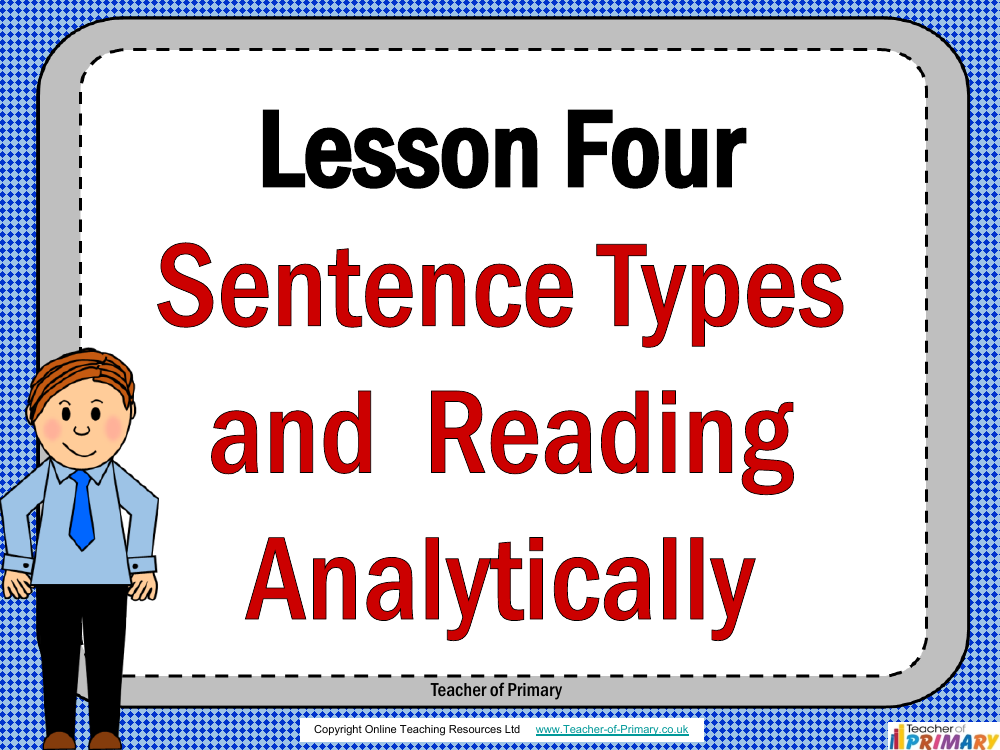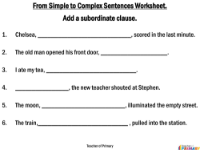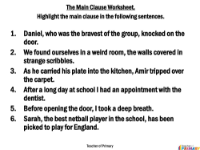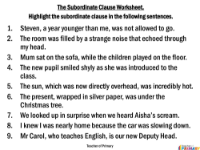Autobiography - Lesson 4 - Sentence Types and Reading Analytically PowerPoint

English Resource Description
Lesson Four of this teaching resource is dedicated to exploring sentence types, specifically complex sentences, and developing analytical reading skills. The lesson aims to help students identify and use main and subordinate clauses within complex sentences. A main clause, which is the central idea of a sentence, can stand alone as a simple sentence, such as "My wife is a doctor." In contrast, a subordinate clause adds additional information to the main clause but cannot stand alone, exemplified by the phrase "who is younger than me" in the sentence "My wife, who is younger than me, is a doctor." Students are taught how complex sentences are formed by combining these two types of clauses, and they practice identifying the main and subordinate clauses in various examples.
Further into the lesson, the focus shifts to reading analytically, using an extract from an autobiographical text set in Glasgow. The passage describes a boy's first day at secondary school, providing an opportunity for students to observe key features of autobiographical writing. These features include writing in the first person, introducing and describing characters, and using language imaginatively to create vivid impressions of the characters. Students are encouraged to answer detailed questions about the text, such as their impressions of the teacher, the language that shapes these impressions, and predictions about future interactions between the narrator and the teacher. The lesson concludes with a silent reading activity where students continue with their chosen autobiographies.




